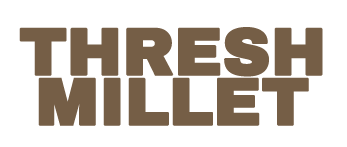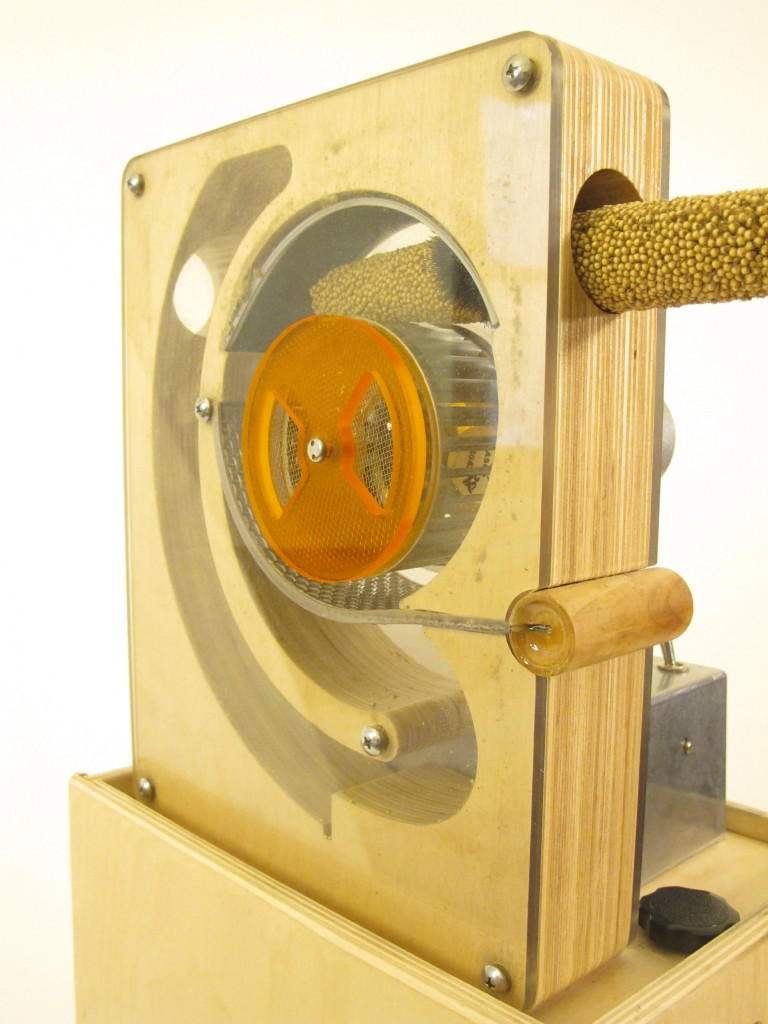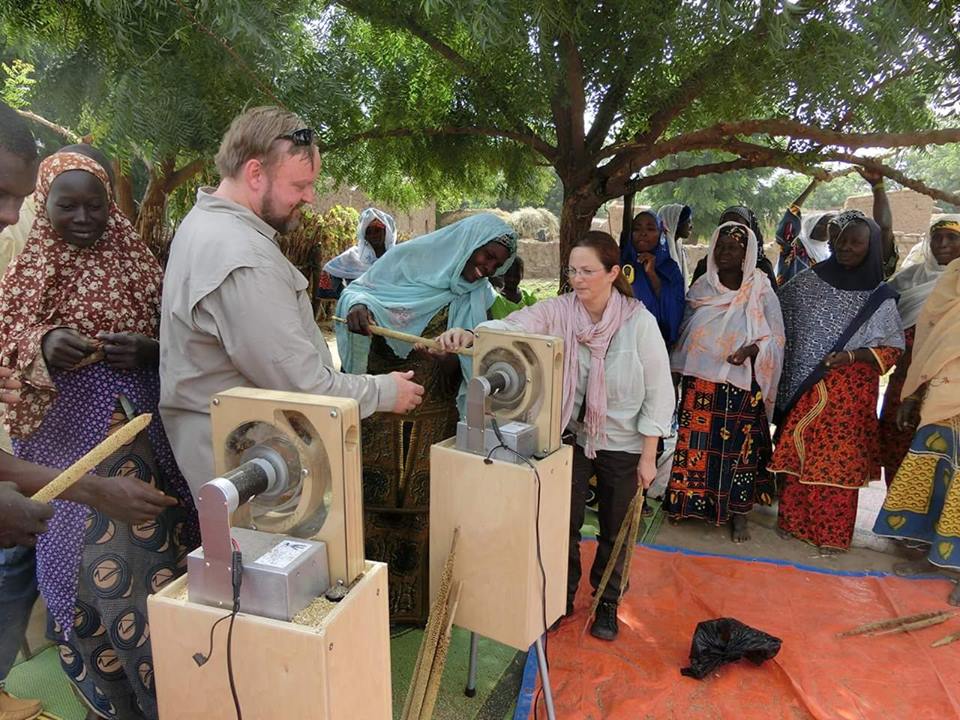Team members Susan Hanna and Roo Trimble were in Niger from November 3 to 14, 2015, field testing the most recent version of the HIT. They started off the trip accompanied by Nat Bascom, the assistant director of the Feed the Future Innovation Lab for Collaborative Research on Sorghum and Millet (SMIL). In Niger, they workedclosely with Moustapha Moussa of National Institute of Agricultural Research of Niger (INRAN) who arranged visits to villages, local industry, university and labs.
In the trip we sought authentic feedback from the women farmers and their families on the most recent iteration of the High Impact Thresher known as the AF2. The name “AF2” is an abbreviation for “ant farm”, which is resembles with its interior workings and passages visible between clear polycarbonate plates.
The machine is simple and easy to understand, compelling to watch as the grain is knocked off the panicle and flows through the machine into the hopper below. The AF2 is powered by two 50 watt photovoltaic panels and and has a hopper style grain collection system where the accumulation of grain can be seen. Our preliminary testing indicated that the AF2 accommodates the longer and more delicate panicles typical in Niger, and be easier to use than the hand cranked and bicycle powered prototypes we introduced during our November 2014 visit to Niger.
Emails and Images from Niger
INRAN has provided 2 women from the lab and several men in addition to 2 drivers, 2 cars and Moustapha! This for each field test. They have been taking pics and video, doing focus groups, asking survey questions and recording all data in addition to ours. Absolutely amazing! Slight change in plans for tomorrow. We will come back to Niamey at night and go to speak with US AID about importing millet to US and then back to Boki to finish testing and data collection. Not sure if we’ll be able to call but if we can then we will try the classroom number. Hope to speak to you all then.
Hi team-
What an amazing day. We’re thoroughly exhausted! We went to the village of Yerimey Day Gorou today and spent the day demonstrating and teaching how to use the AF2. It went remarkably well and by the end women and men and CHILDREN were lined up to thresh! Very cool to watch. We had our “races” between traditional methods and AF2 and we were the big losers in terms of time and seed breakage! The good news though was that people seemed to enjoy using the ant farm while having many negative things to say about the traditional methods.
One very important thing about the ant farm that observers noticed is that everyone in the household could use it and that would allow the women more time for other chores. Currently, if a woman is sick or not strong enough that generally means there is no daily meal…but they could imagine that sharing the threshing and winnowing could bring a welcome and significant change.
The pearl millet here is very different than the pearl millet we’ve tested back home. Here is a great deal of variation – so our task is to make the thresher less aggressive and prevent it from clogging as so much chafe is coming off many of the panicles. We are also investigating ways to import millet into the US. Everyone we’ve met at INRAN has been full of ideas and incredibly helpful. Btw they told us they need a cassava peeling machine, cassava fryer plus a small millet and sorghum flour mill to attach to the ant farm and a mechanized way of sowing seeds so get your thinking caps on!!!
So that’s our preliminary data. We return there on Sunday to see how things went with the thresher while we were gone and to collect data which Dr. Germaine Ibro of INRAN helped to adapt and translate.
All in all an excellent start. Two more villages to go after this! Hope you’re all well. We’ll try to keep you posted as wifi allows.
Susan and Roo


